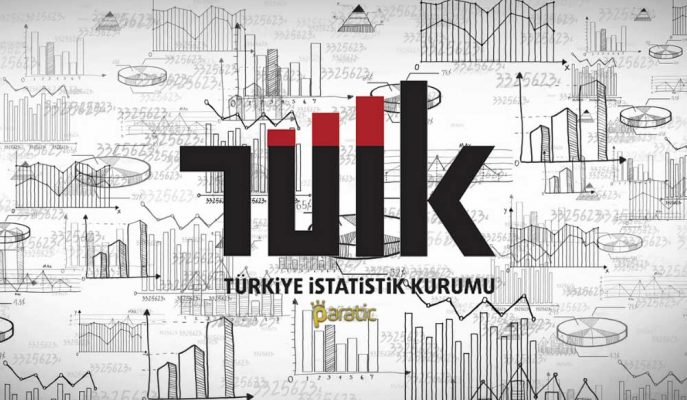Slowing down growth in 2024 is the essential condition of achieving «sustainable» growth and «sustainable disinflation» in the future
- The Turkish Lira has been tracking a measured depreciation trend since August, at a pace somewhat lower than monthly inflation. The current situation can be likened to the "managed floating exchange rate" regime implemented in Türkiye during the 1980s and 1990s. We believe that the current trend can be sustained at least until the local elections (probably for longer).
- Yet, considering that the D-PPI based real exchange rate index hovering at statistically critical thresholds, along with the adverse effects it poses on foreign trade dynamics, the current trends may at some point necessitate a correction in the TL. Therefore, shaping our USD/TRY projections, our framework suggests that the current trend persists in the early parts of the year, followed by some 10-15% rise, and then continued real appreciation in the latter parts of the year thanks to increased capital inflows. Accordingly, our USD/TRY forecast emerges as about 40.00 for end-2014 and an average of 35.60 for the whole year.
[embed]https://www.youtube.com/watch?v=XRth6og83X8&list=RDCMUCKpFJB4GFiNkhmpVZQ_d9Rg&start_radio=1[/embed]
- We expect the CBRT to bring the policy rate to 42.5-45.0%, followed by a monitoring period of the developments in inflation, demand, and firms’ pricing behaviour, etc.
- To successfully realize the projected disinflation process for 2024 and, more importantly, for the subsequent years, we believe that it is a necessary condition for deposit rates to experience a further slight rise and remain at those elevated levels for a protracted period. Yes, this may lead to a severe stagnation in commercial activity and in manufacturing, pulling down GDP growth. Nevertheless, it will play a crucial role in ultimately breaking the 'backward-looking pricing' tendency, which we see as one of the most (probably the most) significant factor behind the inflation persistency.
- In sum, we view a successful cooling down of economic growth in 2024 should ensure the «sustainable growth» and «sustainable disinflation process» performance in the coming years.
- The continuation of the rule-based economic policies, maintaining a temporarily high TL rate, slowing down GDP growth in 2024, and thus encouraging foreign capital inflows will be crucial in ensuring that the exchange rate follows our projected path.
[embed]https://www.youtube.com/watch?v=L-A9JB9XSQ0&t=401s[/embed]
- We anticipate that CBRT will (should) maintain the determination in surpassing this critical threshold and keep the required monetary policy tightness. In this context, we believe that the CBRT could start reducing the interest rate only from 4Q24, gradually lowering the policy rate to probably 37.50% by end-2024 in 250bps increments.
- We anticipate the domestic demand slowdown to get more pronounced through 2Q24 and 3Q24 with the maintenance of the tight monetary policy stance. In addition, even if the global economy avoids a recession in 2024, the global GDP growth will remain unappealing, which is not a supportive environment for the exports performance. In summary, considering all these conditions together, despite a potential revival in growth the 4Q24 due to intensified capital inflows, we project the annual GDP growth at 2.0% (which is also roughly in line with the CBRT’s output gap projections).
- Market forecasts for end-2024 CPI inflation, generally ranging between 40-45%, seem reasonable to us, as our projection stands at 42%. Yet, sustaining this rapid downward trend in CPI inflation beyond this point (in 2025 and thereafter) would require clearly breaking firms' backward-looking pricing and consumers' tendency to pull demand forward. From this perspective, we believe that the prolonged maintenance of a tight monetary policy stance and the slowing down of domestic demand should be the key priorities of the economy management.
Regarding the monetary policy tightness, we consider that deposit rates should be kept at higher levels than the pivot policy rate, in order to support the savings tendency.
- We foresee that the C/A deficit could reach USD46bn (4.3% of GDP) by end-2023, and drop to around USD30bn levels in summer before rising to USD37bn (3.3% of GDP) at end-2024.
- Taking into account the potential slowdown in tax revenues and mandatory earthquake-related expenditures, we anticipate that the central budget deficit/GDP ratio could be around 5.0% on average for the 2023-2024 period as a whole (MTP projection: 6.4%).
- We anticipate that the foreign interest into the government bond market, driven by the alignment of Turkish Lira bond yields with inflation expectations, will continue to grow significantly in 2024.
- Given the continued normalization in economic policies, it appears highly probable that there will be credit rating upgrades from all three credit rating agencies in 2024. With this, Türkiye’s 5-year CDS premium could stabilize in the range of 200-250.
By Serkan Gonencler, chief economist, Gedik Investment
Follow our English language YouTube videos @ REAL TURKEY:
https://www.youtube.com/channel/UCKpFJB4GFiNkhmpVZQ_d9Rg
And content at Twitter: @AtillaEng
Facebook: Real Turkey Channel:
https://www.facebook.com/realturkeychannel/
 economy-turkish
economy-turkish






